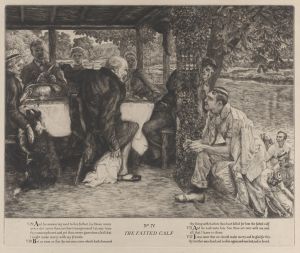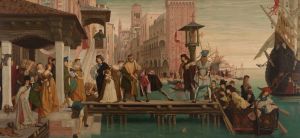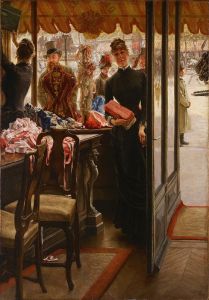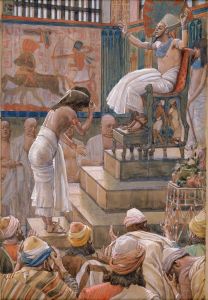
The Departure of the Prodigal Son
A hand-painted replica of James Tissot’s masterpiece The Departure of the Prodigal Son, meticulously crafted by professional artists to capture the true essence of the original. Each piece is created with museum-quality canvas and rare mineral pigments, carefully painted by experienced artists with delicate brushstrokes and rich, layered colors to perfectly recreate the texture of the original artwork. Unlike machine-printed reproductions, this hand-painted version brings the painting to life, infused with the artist’s emotions and skill in every stroke. Whether for personal collection or home decoration, it instantly elevates the artistic atmosphere of any space.
James Tissot's painting "The Departure of the Prodigal Son" is a notable work that reflects the artist's interest in biblical themes and narrative storytelling. James Tissot, a French painter and illustrator, was born on October 15, 1836, in Nantes, France. He is best known for his detailed and realistic style, which he applied to both contemporary scenes and religious subjects.
"The Departure of the Prodigal Son" is part of a series of works by Tissot that depict the parable of the Prodigal Son, a story from the Christian Bible found in the Gospel of Luke, chapter 15, verses 11-32. This parable tells the story of a young man who asks his father for his share of the inheritance and then leaves home to squander his wealth in a distant country. Eventually, he finds himself in dire circumstances and decides to return home, where he is welcomed back by his forgiving father.
Tissot's interpretation of this parable is characterized by his meticulous attention to detail and his ability to capture the emotional essence of the narrative. In "The Departure of the Prodigal Son," Tissot focuses on the moment when the young man leaves his family home, setting the stage for the subsequent events of the story. The painting is notable for its composition and use of color, which convey a sense of movement and emotion.
Tissot's work on biblical themes was part of a broader trend in his career, particularly after his return to Catholicism in the late 19th century. This religious reawakening led him to create a series of paintings illustrating the life of Christ and other biblical stories. These works were well-received and contributed to Tissot's reputation as a skilled interpreter of religious narratives.
"The Departure of the Prodigal Son" is a testament to Tissot's ability to blend realism with narrative depth. His use of light and shadow, as well as his attention to the details of costume and setting, create a vivid and engaging scene that draws viewers into the story. The painting reflects Tissot's interest in capturing the human experience and the complexities of emotion, themes that are evident throughout his body of work.
Tissot's paintings, including "The Departure of the Prodigal Son," are housed in various collections and museums around the world. His work continues to be studied and appreciated for its technical skill and its ability to convey powerful stories through visual art. Tissot's contribution to the art world, particularly in the realm of religious painting, remains significant, and his works are considered important examples of 19th-century art.
Overall, "The Departure of the Prodigal Son" exemplifies James Tissot's mastery of narrative painting and his dedication to exploring themes of faith, redemption, and human emotion. Through his detailed and evocative style, Tissot invites viewers to reflect on the timeless story of the Prodigal Son and its enduring message of forgiveness and reconciliation.














